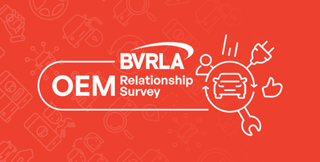Ogilvie Fleet says it has been successful in virtually eliminating customers questioning end-of-contract damage charges on leased vehicles.
The expanding independent contract hire and leasing company with a fleet approaching 11,500 vehicles introduced a ‘transparency policy’ in respect of damage charges, by telling customers what they would be at the outset of the contract.
End of contract damage charges are a frequently contentious issue for customers, but Ogilvie Fleet says that in 98% of cases where a cost was incurred it was accepted by clients.
In the remaining 2% of cases - amounting to around four or five vehicles a month - Ogilvie Fleet discusses the damage charge with customers and agrees a fee acceptable to both parties. That compares with a query/rejection rate of 44% prior to introduction of the transparent policy a decade ago.
Ogilvie Fleet’s end-of-contact charging policy is one of the strategies that underpins its client service, which has seen the company win Experteye’s independent post-sale Fleeteye customer satisfaction survey of fleet decision-makers for four consecutive years - 2010-13 - with the organisation now hoping for a fifth success in 2014.
Ogilvie Fleet operations director Jim Hannah said: “We want customers to have a pleasurable experience when they lease vehicles from us and not for it to be tainted by a battle over end-of-contract charges.
“In our experience an increasing number of our competitors are looking to make money at the end of a contract via damage recharging. Those leasing companies view end-of-contract charges as a profit centre, which is a very short term strategy and something we deplore.”
Ogilvie Fleet operates a standard fixed cost end-of-contract damage recharge cost matrix that customers leasing company cars and light commercial vehicles sign up to in their master hire agreement.
Hannah said: “End-of-contract charges can be viewed as a sting in the tail by fleet managers. They consider that they have paid the contract for the full period and don’t want to make any further payments when they return their vehicle.
“Our policy of making end-of-contract charges clear in the initial agreement makes any cost transparent to customers. Consequently they are more accepting of any damage charge if one arises.”
In the event of a charge, the fleet manager is sent the vehicle appraisal document and appropriate photographs.
In 2014, a total of 61% of Ogilvie Fleet’s defleeted cars and vans attracted no end of contract damage charges.
The average cost per vehicle across the 39% where damage charges were levied was just £259 - below the 2014 industry average of £274 as monitored by Fleet News - while the average charge across all defleeted vehicles was only £100.
Hannah said: “Our pricing matrix is now widely accepted as fair and reasonable within our customer base because our standard end of contract damage recharges are substantially less than the cost of having the repairs carried out by the customer.”
What’s more fleet managers who return a vehicle that does not incur a damage charge receive a “thank you” email from Ogilvie Fleet.
Despite a greater number of older vehicles now returning due to fleet replacement cycle extension as a consequence of the tough economic climate faced by many businesses in recent years, average damage charges have been held at what Ogilvie Fleet believe are industry-leading low levels:
Year Damaged % Average damage invoiced
2009 39% £241
2010 21% £250
2011 31% £255
2012 39% £279
2013 36% £245
2014 39% £259
Hannah said: “Given the increased age and mileage of vehicles being returned I think we are being more benevolent towards customers in terms of end of contract damage charges.
“It would be natural to assume that older vehicles would incur higher charges, but we want to be fair and reasonable to customers and we are more lenient towards vehicles that are four, five or six years old and have clocked up high mileages.”
Ogilvie Fleet end of contract damage recharge costs to return a vehicle to British Vehicle Rental and Leasing Association ‘fair wear and tear standard’ are: £75 for a door panel, front wings and rear quarter panels; £120 for a bonnet, boot lid, tailgate, bumper or roof.
Similarly for light commercial vehicles, sample recharge prices include: £75 for door panels and front wings; £120 for side sliding doors, large side panels or bonnet, tailgate and bumpers; £250 for a roof.
Other charges include: alloy wheel refurbishment £35, full valet £40 and windscreen chips (maximum three) £40.






















GM. Stratford upon Avon - 01/12/2014 12:55
Established fleet managers will already know the benefits of dealing with such an open and decent leasing company - and No, I don't have any association with Ogilvie other than as a customer - but for those who have only recently become involved with running a fleet, or it is just a part-time role (as in my case) high end of lease charges, can make that 'competitive' lower leasing cost from an alternative supplier, suddenly look expensive and definitely a cause of dispute and a management time-eater!